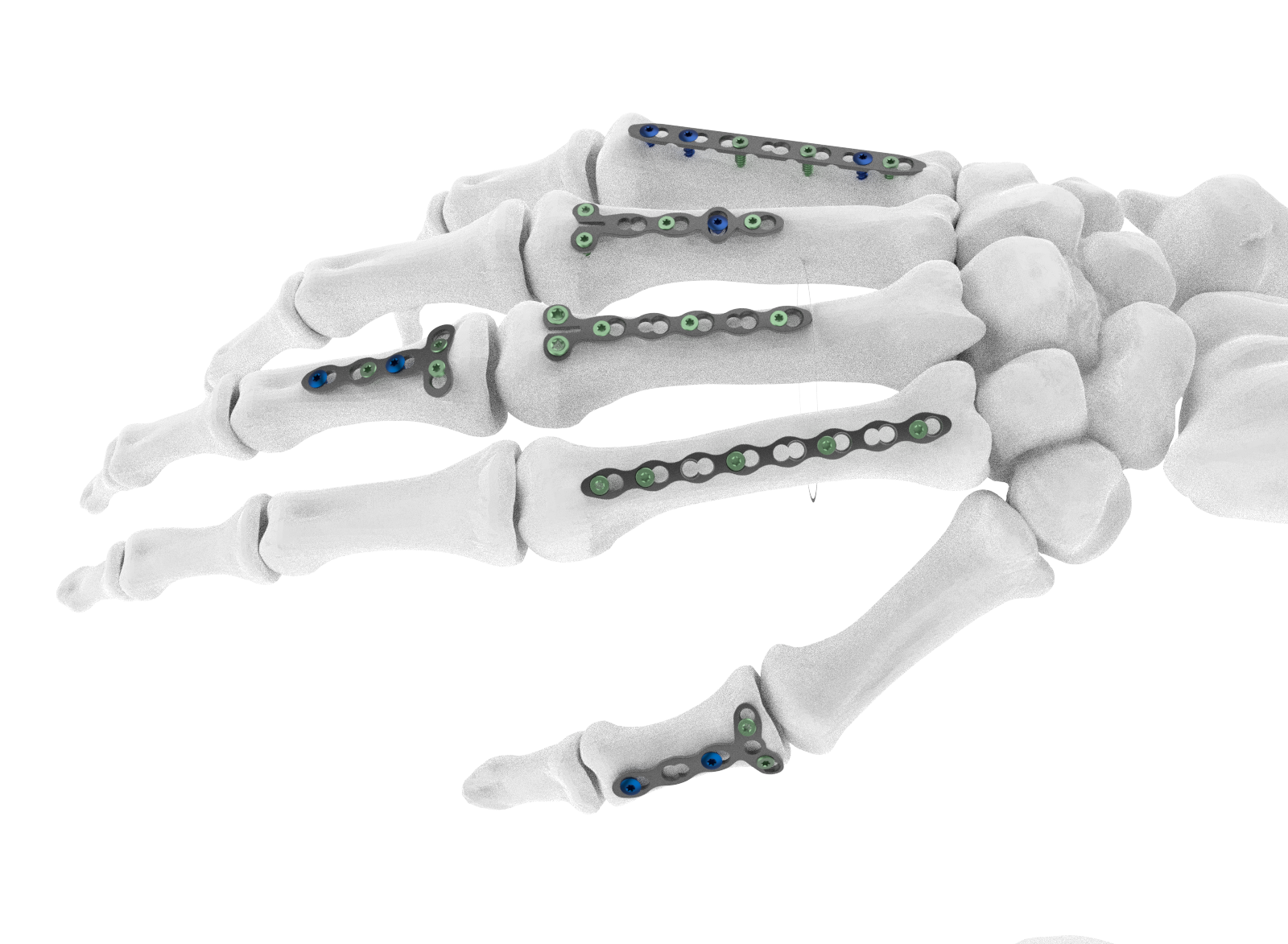 Hand injuries may significantly interfere with a person’s everyday activities and capacity to perform fundamental duties. Orthopedic surgeons constantly seek new, creative ways to improve healing and boost usefulness. The use of locking plates is one such revolutionary development in the realm of orthopedics.
Hand injuries may significantly interfere with a person’s everyday activities and capacity to perform fundamental duties. Orthopedic surgeons constantly seek new, creative ways to improve healing and boost usefulness. The use of locking plates is one such revolutionary development in the realm of orthopedics.
Types of Orthopedic Plates
The treatment of fractures and other bone-related injuries requires orthopedic plates. In orthopedic procedures, a variety of plates are applied, such as,
Compression Plates
These plates are made to compress the fractured bone ends and support bone healing by bringing the ends of the fractured bone closer together.
Dynamic Compression Plates (DCPs)
While having unique pores which allow dynamic compression throughout the healing process, DCPs resemble compression plates.
Reconstruction Plates
These plates offer stability and support to restore the bone’s natural structure in complicated fractures or defects.
Locking Plates
As their name implies, locking plates include threaded screw holes that lock the screws in place to increase stability and speed up bone recovery.
Utilization of Locking Plates
Locking plates have become increasingly popular in orthopedic surgery because of their particular features and benefits. Utilizing locking plates has some advantages, such as,
Increased Stability
Locking plates, as opposed to standard plates, have screws that lock into the plate, resulting in a fixed-angle construction. This design offers exceptional stability, particularly in osteoporotic or comminuted fractures.
Reduced Risk of Screw Loosening
The plate’s secured screws reduce the possibility of screw loosening, providing long-term stability and lowering the need for subsequent procedures.
Improved Load Distribution
Locking plates distribute the pressure over a broader surface area of the bone, lowering stress and the likelihood of implant failure.
Early Mobilization
Locking plates provide:
-> Increased stability.
-> Allowing for early mobilization and rehabilitation.
-> faster recovery
-> better patient outcomes.
Effectiveness of Locking Plates
Multiple studies have shown that locking plates are beneficial in treating hand injuries. Some of the important findings are,
Increased Healing Rates
Locking plates improve stability, which promotes faster and more consistent bone repair. It is especially useful in complicated fractures or when standard implants may not provide appropriate fixation.
Reduced Complication Rates
Locking plates’ better stability and lower chance of screw loosening contribute to lower complication rates, such as implant failure, malunion, or nonunion.
Improved Functional Results
Locking plates aid in early mobilization and rehabilitation, improving patients’ functional results, such as increased range of motion and strength.
Implants Used in Orthopedic Surgery
Various implants are used in orthopedic surgery to fix fractures and facilitate healing. Among these implants are,
Screws
Screws are used to hold bones together during the healing process. They might be standard screws or locking screws used in conjunction with locking plates.
Plates
Plates operate as a bridge over the shattered bone, providing stability. They come in various shapes and sizes, depending on the unique needs of the injury.
Intramedullary Nails
These implants are placed in the hollow parts of long bones, such as the femur or tibia, to provide stability and support for fractures.
Locking Plates and Their Uses
Locking plates are often utilized in orthopedic surgery for various hand injuries. Locking plates are commonly used in the following applications:
Distal Radius Fractures
A distal radius fracture is one of the most prevalent types of wrist fractures. Locking plates are frequently utilized to offer solid fixation and restore normal bone alignment.
Metacarpal and Phalangeal Fractures
Trauma or extreme force can cause fractures of the metacarpal and phalangeal bones in the hand. Locking plates keep the joints aligned and stable, allowing maximum healing and functional recovery.
Complex Fractures
Locking plates are preferred in complicated fractures where the bone is substantially fractured or comminuted due to their ability to offer stable fixation, even in reduced bone quality. It promotes healing by ensuring suitable alignment of the bone fractures.
Osteoporotic Fractures
Osteoporosis, a condition marked by decreased bone density, makes permanent fixation with conventional implants difficult. By offering solid fixation less dependent on bone quality, locking plates provide a dependable treatment for osteoporotic fractures.
Nonunion or Malunion Corrections
Locking plates can rectify alignment and encourage bone healing when a bone fails to mend (nonunion) or heals in an incorrect position (malunion). The robust construction provided by locking plates helps deal with these difficult instances.
Final Words
Using locking plates in orthopedics has resulted in considerable advances in treating hand injuries. Locking plates are anticipated to play a key part in hand injury therapy as orthopedic surgeons continue to explore novel procedures and developments, allowing patients to restore their functioning and quality of life more successfully.More Information About Orthopedic Implants & Screws Click here.

